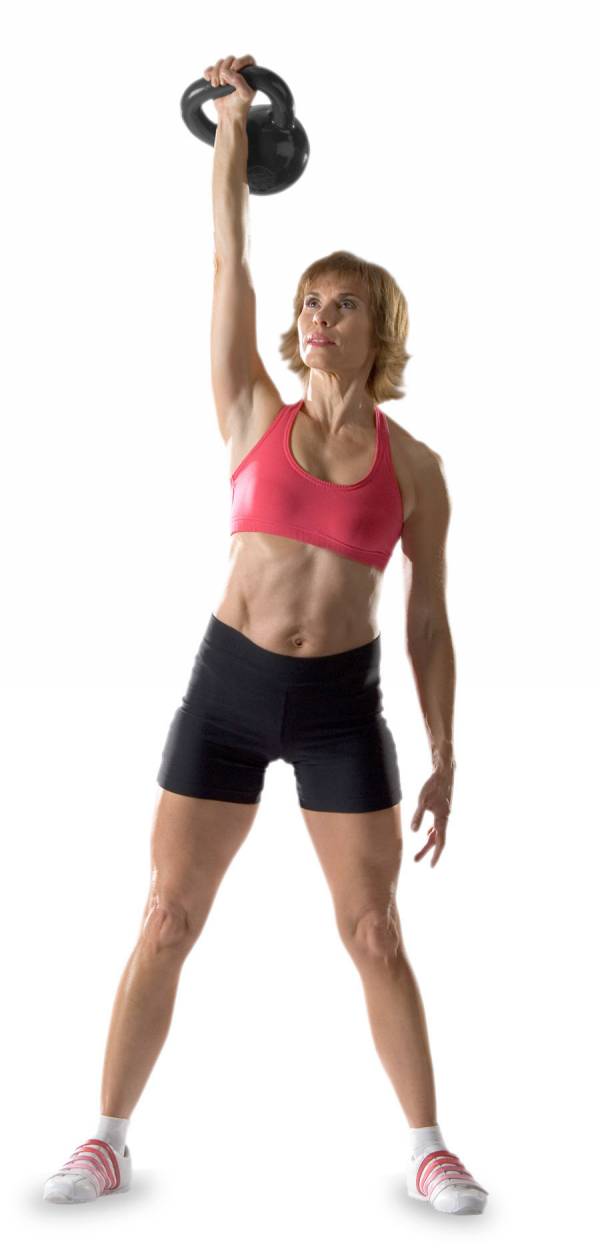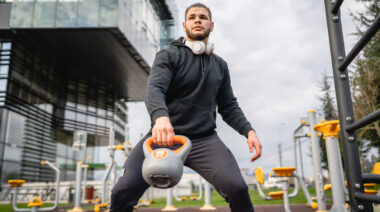In part one of our interview with Master RKC Instructor Andrea DuCane, she shared in regards to her first endeavor as a kettlebell instructor – to translate a system built for the military and law-enforcement into something that was accessible to women, wives, and moms.
Having accomplished that, Andrea’s latest efforts are focused on bringing kettlebells to older, deconditioned, or formerly athletic clientele. Her book The Ageless Body and DVD The Kettlebell Boomer were created with this aim in mind.
I decided I wanted to take it more mainstream because I saw so many people coming in that were of the Boomer age, and those who are younger and older who have different issues, but they’re all common – meaning they have areas they are neglecting. Maybe they don’t know how to start a system and they start hardcore and they get injured and get scared. So, what’s a way they can really progressively step-by-step work their bodies safely to progress to a pretty high level? They have to know modifications, progressions they can do to make it easier or to take it up a step, so they’re always working where they are at that moment.
I like to take a little bit from many different modalities and disciplines and since I’ve studied many of them, I’ve pulled them together in a fashion that’s very approachable by a person who’s maybe never been fit or by an athlete who has been fit, but has jacked themselves up and wants to get back to health.
A recurring theme for Andrea, whether it be in how she relates to her students or how she approaches her own growth as an athlete and coach is keeping the mindset of a student. This mindset of an open attitude and a zest for learning pays off whether you are a former athlete, pure beginner, or a coach.
The Former Athlete
As someone who has been competitive in a variety of sports in the past, you may find yourself able to relate to Andrea’s materials, even though at first glance they might seem aimed at someone older or a non-athlete. As the years go by and injuries accrue, and things like flexibility and mobility are neglected, you find yourself in a difficult place of your body no longer cooperating with how you’ve always trained.
When asked how she handles a student who is a former athlete now encountering physical challenges and injuries, Andrea had this to say:
First of all people want to do either what they’ve done all their life, which is usually something they find somewhat easy, because it’s more fun. It gets a little bit of results and they want to push that way. So if
they’ve been pushing their bodies really hard they might have neglected the flexibility and mobility end of the spectrum. So you can approach them and say, “Well, okay, you want to do all these things – let’s look at some goals for this other spectrum. Approach mobility and flexibility in finding the competition within yourself. My goal is to reach this, to be able to have this kind of mobility, move my body like this, by gentle and basically consistent training.” So give them little goals – the right kind of goals that are healthy for them.
The other thing is you have to say to them is, long term do you want to be healthy or do you want to be ending with a bunch of hip replacements and crippled? So you have them take it down. Find ways for them to keep themselves moving, but in other ways. That’s where the idea is of what I think cross-training means – it really means doing different activities. One day you can hit it hard with strength, maybe doing some kettlebells two or three times a week, go another day on a bike ride and do some flexibility and mobility work. Maybe if you’re a competitive sports athlete, join a league, that’s of your age appropriateness, and do that for one night a week.
Sometimes the body might take to the new style of training, but the mind can struggle. Aging athletes often have a hard time adjusting to scaling back and letting go of their competitive side.
You have to come to grips with the fact you’re not going to be able to truly compete on the same level generally with a 30 year old if you’re 55 or 60. And hopefully your goal is to be 90 and still be out there walking and playing a light game of tennis or golf. You have to find a way to channel that competitiveness in a healthy way or change your viewpoint on your body and training.
The Pure Beginner
And what about the person of Boomer age who has never been an athlete? Andrea sees a lot of clientele who have never been physically fit before in their life. According to her, there’s no reason they can’t get started at any age.
Someone who’s never worked out, you start them gradually and slowly. You start with mobility. You get them moving and adding in flexibility and strength training. My feeling is once you’ve got some of those then you can start cardio, but fairly simple at first.
Like the former athlete, with the pure beginner it’s not just the body that needs training, but also the mind. Learning to sleep right, eat right, and properly decipher all the signals your body is sending you. Andrea believes all of these things can be learned at any age.
Those 55 year olds who are just starting the program – they cannot compare themselves to other people. They have to just focus on themselves and keep a journal. There’s a bit of teaching them to listen to their bodies for the first time in a way they’ve never done before. They have to learn to distinguish between pain that’s dangerous and the sensation of moving their muscles – for the first time maybe, to really listen to what’s good and what’s bad and to monitor themselves and stop before they get too fatigued.

The Coach
The theme of learning and the student mindset doesn’t stop with the clientele. Andrea herself maintains an attitude of always having more to learn.
As coaches ourselves, we need to be coached. People who get to a certain level, they stop getting coached. They think they know it all or they’re just embarrassed maybe. It’s important to have one of your colleagues or someone you trust to watch your movement. We all get sloppy or lazy; we’ve neglected something.
It’s the sense of being humble, because I don’t know everything. It’s a path I’m on. I learn from my clients; as much as I give them I get back from them.
Andrea’s Tips for Being a Good Coach:
- Develop a good eye for movement. Understand lines and loads and how the body moves, because everyone is built differently.
- Develop a good ear. You have to listen. Actually it’s listening sometimes to what is being said between the sentences.
- Have compassion.
- Be a good mimic. Mimicking their mistakes is a good tool.
- Be honest about your background. Don’t try to be something you’re not.
Read part one of our interview with Andrea:
Andrea Ducane, Part 1 – The Ageless Body
To follow Andrea’s workouts here on Breaking Muscle follow this link:
Strength & Conditioning Workouts from Andrea DuCane
Additional Resources:






